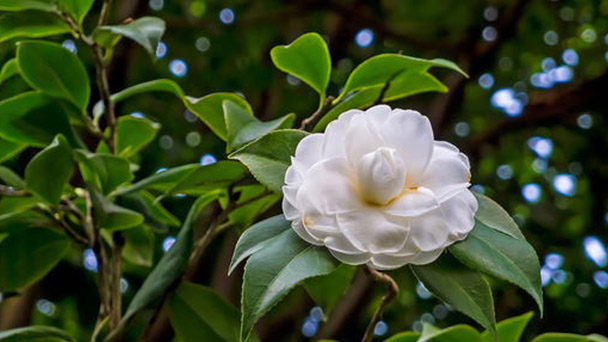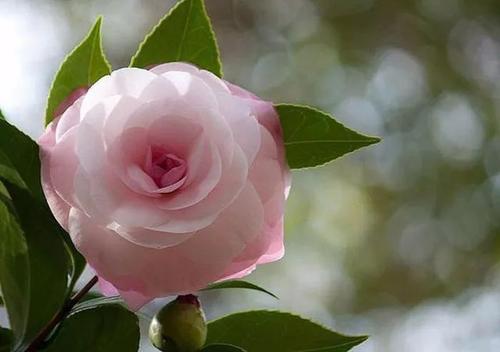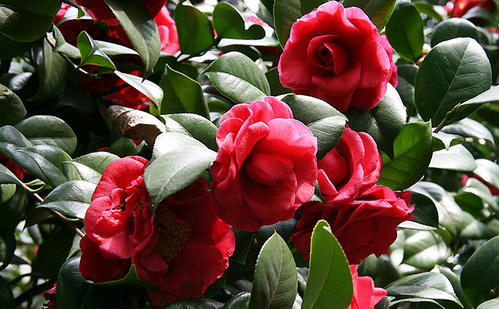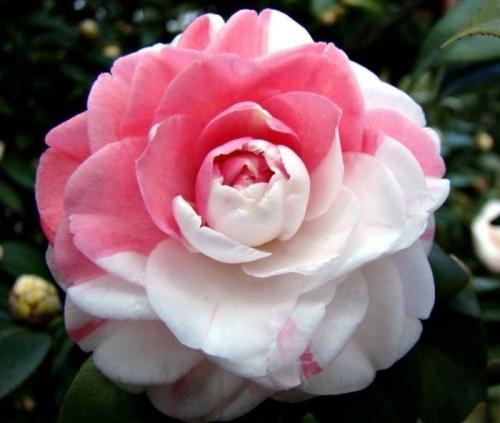How to care for Japanese camellia
Written by Maggie
Jan 05 2021

Japanese camellia is one of the traditional ornamental plants in China and has a very long history of early cultivation. Japanese camellia for its dignified and generous appearance and powerful nutritional value to win many flower friends' love. How to care for Japanese camellia when growing it? Let's look together!

How to care for Japanese camellia leaf tips withered
There are many reasons for the withered tip of Japanese camellia. Diseases, too much light, too much fertilization or too much water will make the withered tip of japanese camellia grow badly. In case of disease, trim the diseased leaves and spray Japanese Camellia. If the maintenance is caused by improper, reasonable remedies should be made according to different circumstances, and the maintenance mode should be adjusted in the later period. The following are details of how to care for Japanese camellia leaf tips withered.
1.Disease control
During Japanese camellia growing, the tips of the leaves appear scorched, possibly due to anthrax. Poor Japanese Camellia growth, improper maintenance, or inappropriate environment during maintenance can cause illness in Japanese Camellia. If Japanese Camellia has anthrax, the leaves and diseased branches need to be cut and burned together, and the Japanese Camellia should be sprayed with a polybalm or methyl topazin.
2. Light
Japanese Camellia loves light and needs light during growth, but is not light resistant. During maintenance, Japanese Camellia lost a lot of water when exposed to strong light, causing the tips of the leaves to become dry and charred. Move Japanese Camellia to a well-ventilated environment and avoid the midday glare during the summer.
3. Fertilizer
During Japanese Camellia growing, you need to have the right amount of fertilizer, but use it wisely. Too much fertilizer or too much fertilizer can make Japanese camellia's roots burn, making them less able to absorb nutrients and water, and leaving them dry and charred. If too much fertilizer is needed, water Japanese Camellia to dilute the fertilizer and fertilize it properly later.
4. Watering
Japanese Camellia prefers wet weather, but Japanese Camellia is not waterlogged and should be watered properly during maintenance. Too much water during the growing period can make the pots waterlogging and leave the Japanese Camellia's roots to rot and its leaves to burn. If too much water is needed, loosen and drain the Japanese Camellia to accelerate evaporation.

https://www.rayagarden.com/how-to-garden/propagation-methods-of-japanese-camellia.html
How to care for Japanese camellia new leaf droop
The new Japanese camellia leaf droop is mainly caused by improper maintenance, soil alkalization and soil agglomeration will affect the root system growth, which will make the new Japanese camellia leaf droop. Japanese Camellia needs plenty of light during its growth, which can cause the leaves to limp and wilt, and too much water and fertilizer. Japanese Camellia's roots become damaged, causing the leaves to droop. The following are details of how to care for Japanese camellia new leaf droops.
1. Soil
Japanese Camellia is a plant that likes acid soil. When irrigated with tap water for a long time during the growth period, the acidity of the pot soil will decrease, and the alkalization and ceiling of the soil will affect the growth of the root system, leading to the drooping of the new leaves of Japanese Camellia. Adding ferrous sulphate solution to Japanese camellia, fermenting rice water or beer water after soil alkalization can adjust the acidity and alkalinity of soil.
2. Sufficient light
Japanese Camellia love light, and during its growth, its new leaves will droop because they are in the shade indoors for a long time and lack light. If the Japanese Camellia lacks light, move it to a well-lit location outside and give it plenty of light to grow properly. Japanese Camellia is intolerant of high light and needs shade during the summer.
3. Water
Japanese Camellia prefers wet weather and is not waterlogged. It is suitable for growing in a warm, wet and well-ventilated climate. Too much water will cause the root system of Japanese Camellia to rot and make the leaves droop. If there is too much water in the pot, drain the Japanese Camellia and place the pot in a warm and ventilated place to accelerate evaporation.
4. Fertilizer
During Japanese camellia, you need the right amount of fertilizer for the flowers and leaves to grow, and the new leaves may droop because of too much fertilizer. If fertilization is too much during curing, you can dilute the fertility with appropriate amounts of water and adjust the amount and frequency of fertilization in the later period. Thin fertilizer should be applied frequently before flowering and stopped during winter.

Latest Updated
- Benefits of Bugleweed - 7 Science-backed Health Benefits
- Bugleweed Dangers & Side Effects - Is It Poisonous?
- How to Plant Evergreen Trees - What You Should Know
- When to Plant Evergreens - Grow Guide for Evergreen Trees
- 12 Wonderful Evergreen Shrubs for Your Garden
- 12 Popular Evergreen Plants with Pictures for Beginners
- When And How To Prune A Lilac Bush Like a Pro
- How to Grow & Care for Lilac Vine (Hardenbergia Violacea)
- Japanese Lilac Tree (Syringa Reticulata) Care & Propagation Guide
- Shumard Oak Pros and Cons - What to Know
Popular Articles
- Winter maintenance of Antirrhinum Majus
- How to Grow Terminalia Mantaly Tree
- How to Grow and Care for Crossostephium Chinense
- How to grow Antirrhinum Majus in spring
- Peristeria Elata (Dove Orchid) Profile: Info & Care Guide
- Underwatered Snake Plant (Sansevieria Trifasciata) - Signs And How To Fix
- How to Care for Brazilian Jasmine Plant (Mandevilla Sanderi)
- How to Grow & Care for Graptopetalum Purple Delight in Summer
- Rosa Chinensis (China Rose): Plant Growing & Care Tips
- How to Care for Baby Sun Rose (Aptenia Cordifolia)